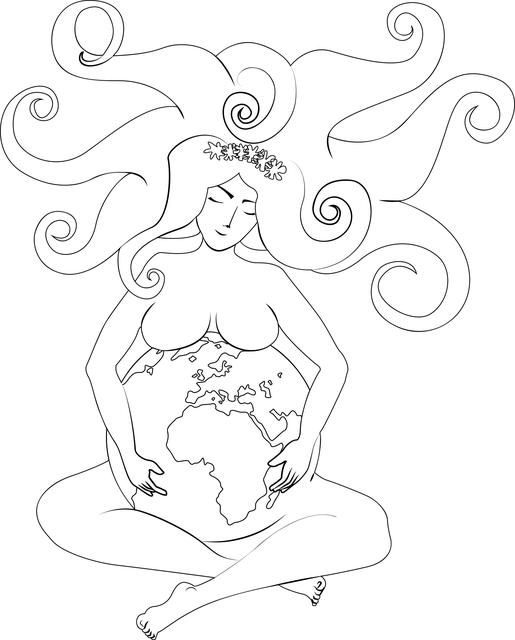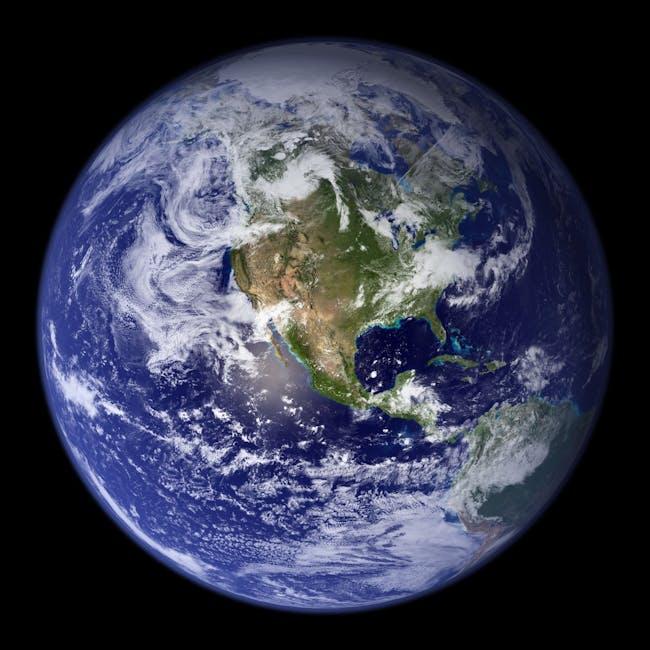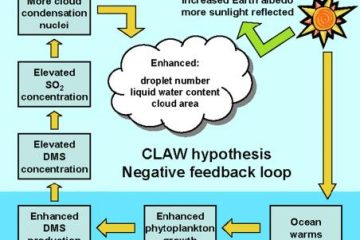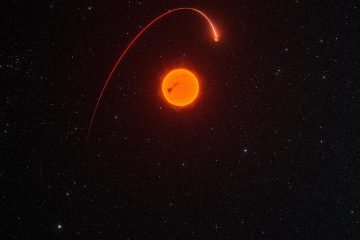Table of Contents
- Understanding the Gaia Hypothesis and Its Significance
- The Interconnectedness of Life and the Earth
- How the Gaia Hypothesis Influences Environmental Thought
- Practical Applications of the Gaia Hypothesis in Daily Life
- Encouraging Sustainable Practices Through Gaias Lens
- Q&A
- In Retrospect

Understanding the Gaia Hypothesis and Its Significance
The Gaia Hypothesis, proposed by scientist James Lovelock in the 1970s, posits that the Earth and its biological systems behave as a single, self-regulating entity. This concept suggests that life on Earth interacts with the physical environment to maintain conditions that are conducive to sustaining life. In simple terms, it imagines the planet as a complex organism where every living component works together, ensuring the biosphere remains balanced. This interconnectedness among organisms and their surroundings plays a crucial role in climate regulation, nutrient cycling, and the optimization of terrestrial, marine, and atmospheric processes.
One key aspect of the Gaia Hypothesis is the idea of feedback loops, where changes in one part of the system can lead to widespread effects across others. For instance, the growth of forests influences the atmosphere by absorbing carbon dioxide, which, in turn, affects temperatures and precipitation patterns. This interplay illustrates how biodiversity is crucial for maintaining ecological stability. To further understand this concept, consider the following points:
- Mutual Influence: Organisms and their environment are in constant dialogue.
- Stability and Change: While the Earth strives for equilibrium, it is also subject to changes that challenge this balance.
- Human Impact: Human activities can disrupt these natural processes, leading to environmental crises.
The significance of this hypothesis extends beyond theoretical realms; it invites us to reconsider our role in the ecosystem. Recognizing that our actions influence the planet as a whole encourages a more sustainable approach to environmental stewardship. By understanding our interconnectedness with nature, we can better appreciate the complex relationships that sustain life on Earth. Below is a brief overview table highlighting the core principles and implications of the Gaia Hypothesis:
| Core Principle | Implication |
|---|---|
| Interdependence of Systems | Health of one system affects others. |
| Self-Regulation | Natural processes maintain life-supporting conditions. |
| Human Influence | Actions can disrupt or enhance ecological balance. |
The Interconnectedness of Life and the Earth
At the core of understanding our planet lies a profound concept that emphasizes how all living things are intricately woven into the fabric of Earth’s ecosystems. This interconnectedness suggests that the survival of one species is deeply linked to the well-being of others. For instance, consider the roles played by different organisms in maintaining ecological balance:
- Producers: Plants capture energy from the sun, forming the basis of food webs.
- Consumers: Herbivores, carnivores, and omnivores rely on the energy stored in plants and other animals, creating dynamic predator-prey relationships.
- Decomposers: Fungi and bacteria break down organic matter, returning vital nutrients to the soil, which supports plant life.
This synergy exemplifies how even the smallest organisms play crucial roles, highlighting that the Earth’s systems are not just a collection of elements, but a complex network where each part contributes to the health of the whole. Additionally, the phenomenon of nutrient cycling illustrates this point beautifully. The table below summarizes key cycles:
| Cycle | Key Components | Impact |
|---|---|---|
| Nitrogen Cycle | Bacteria, legumes, decomposers | Essential for protein synthesis |
| Carbon Cycle | Photosynthesis, respiration, decomposition | Regulates Earth’s climate |
| Water Cycle | Evaporation, condensation, precipitation | Supports all life forms |
Ultimately, recognizing this profound interconnectedness fosters a deeper appreciation for environmental stewardship. When we understand that each action, whether it’s conserving water or reducing plastic use, is linked to the broader health of our planet, we can begin to make informed choices that promote sustainability. Caring for our ecosystems is not merely an ethical obligation; it is integral to our own survival on this shared Earth.

How the Gaia Hypothesis Influences Environmental Thought
The Gaia Hypothesis, proposed by James Lovelock in the 1970s, posits that Earth functions as a self-regulating system in which living organisms and their inorganic surroundings interact synergistically. This revolutionary concept emphasizes the interconnectedness of all life and the biosphere, suggesting that biological and geological processes are constantly working together to create an environment conducive to life. The implication of this perspective is profound, influencing how we perceive environmental issues and our role within the larger ecological framework.
Incorporating the Gaia Hypothesis into environmental thought has led to several key considerations, including:
- Interdependence: Recognizing that species, habitats, and human actions are interrelated encourages a holistic approach to ecological management.
- Responsibility: Understanding Earth’s self-regulatory mechanisms fosters a sense of stewardship, where individuals and societies feel obligated to protect and nurture the environment.
- Adaptability: The notion that ecosystems can adapt to changes promotes the idea of resilience, which is vital for making informed decisions about conservation and resource use.
This worldview has sparked innovative movements within environmentalism, such as:
| Movement | Description |
|---|---|
| Ecological Restoration | Efforts to restore ecosystems to their natural state, acknowledging their capacity for self-healing. |
| Sustainable Development | Promoting practices that meet current needs without compromising future generations. |
| Biocentrism | An ethical standpoint that places intrinsic value on all living beings. |
By exploring these concepts, the Gaia Hypothesis challenges traditional anthropocentric views, inviting humanity to see itself as part of an intricate web of life rather than separate from it. As environmental crises escalate, this paradigm shift presents a critical opportunity to rethink our relationship with nature and to foster a more sustainable future for all species on Earth.

Practical Applications of the Gaia Hypothesis in Daily Life
The Gaia Hypothesis suggests that Earth functions as a self-regulating system, where living organisms interact with their inorganic surroundings to maintain conditions for life. In everyday life, this concept can inspire sustainable practices that benefit both the environment and our well-being. By integrating these ideas into our routines, individuals can contribute to a healthier planet. Some practical applications include:
- Mindful Consumption: Opt for organic and locally-sourced products to reduce the carbon footprint and support local economies.
- Waste Reduction: Implement recycling and composting strategies to minimize landfill contributions, enhancing the nutrient cycling that supports diverse ecosystems.
- Energy Efficiency: Utilize energy-efficient appliances and renewable energy sources to lower resource depletion and greenhouse gas emissions.
Communities can also adopt the principles of this hypothesis by fostering cooperative initiatives aimed at ecological and social well-being. For instance, community gardens not only provide fresh produce but also promote biodiversity. Furthermore, collaborative projects can help restore native habitats and improve local ecosystems. Consider these options:
| Community Initiatives | Benefits |
|---|---|
| Community Gardens | Enhances food security and biodiversity |
| Tree-planting Events | Improves air quality and provides habitats |
| Clean-up Drives | Restores natural habitats and educates members |
On a personal level, adopting mindfulness practices can help individuals reconnect with their surroundings and understand the interconnectedness of life. This might include actions such as spending time in nature, practicing deep breathing during outdoor activities, and fostering a sense of stewardship for local environments. Simple changes can lead to profound effects on our relationships with nature and each other. Here are a few strategies:
- Nature Walks: Regularly engage with natural surroundings to develop an appreciation of local ecosystems.
- Mindful Practices: Incorporate activities like meditation or yoga in natural settings to cultivate a deeper connection with nature.
- Education: Stay informed about environmental issues and engage in discussions about preserving ecosystems.

Encouraging Sustainable Practices Through Gaias Lens
Through the lens of the Gaia hypothesis, we can see our planet as a self-regulating, interconnected system where every element plays a pivotal role in maintaining a delicate balance. This perspective fosters a deep appreciation for the natural world, urging us to cherish and protect our environment. By recognizing that human activities significantly impact this system, we become more inclined to adopt practices that promote sustainability. Some practical approaches to encourage these sustainable practices include:
- Reducing Waste: Emphasizing recycling, composting, and minimizing single-use products.
- Conserving Energy: Implementing energy-efficient appliances and exploring renewable energy sources.
- Supporting Local Economies: Choosing to buy locally-sourced products to reduce your carbon footprint.
Understanding our role within Gaia’s framework also highlights the importance of biodiversity and how it contributes to ecosystem stability. Each species, no matter how small, has its function and significance. Promoting biodiversity can be achieved through various means, such as:
- Planting Native Species: Encouraging local flora in our gardens and communities.
- Reducing Pesticide Use: Choosing organic farming methods to protect vital insect and animal populations.
- Preserving Natural Habitats: Supporting conservation efforts to ensure ecosystems remain intact.
Additionally, educating ourselves and others about the Gaia hypothesis can inspire collective action towards sustainable living. This can include community workshops, social media campaigns, or even educational programs in schools. By sharing knowledge, we empower each other to make informed decisions that benefit both humanity and the Earth. A collaborative approach involving:
- Engaging in Local Governance: Advocating for policies that prioritize sustainability.
- Participating in Conservation Projects: Volunteering time and resources to restore local environments.
- Joining Environmental Groups: Connecting with like-minded individuals who share the same vision for a sustainable future.
Q&A
Q&A: Understanding the Gaia Hypothesis in Simple Terms
Q1: What is the Gaia Hypothesis? A: The Gaia Hypothesis proposes that the Earth and its biological systems can be viewed as a single, self-regulating entity. It suggests that living organisms interact with their inorganic surroundings to maintain conditions conducive to life, almost like a super-organism working to sustain itself.Q2: Who coined the term “Gaia”? A: The term “Gaia” was popularized by the British scientist James Lovelock in the 1970s. He named the hypothesis after Gaia, the ancient Greek goddess of the Earth, to emphasize the interconnectedness of life and the planet.
Q3: What does it mean for Earth to be a ‘self-regulating’ system? A: A self-regulating system means that Earth has natural mechanisms that help maintain balance and stability. For example, aspects like climate, atmosphere composition, and oceanic conditions are influenced by the interactions among living organisms, allowing the planet to sustain life.
Q4: How do organisms contribute to this self-regulation? A: Organisms contribute to Earth’s self-regulation in various ways. Plants produce oxygen and absorb carbon dioxide, while animals impact nutrient cycles through their waste. These interactions help stabilize environmental conditions, promoting a sustainable ecosystem.
Q5: Is the Gaia Hypothesis widely accepted in the scientific community? A: While the Gaia Hypothesis has sparked considerable interest and discussion, it remains a topic of debate. Some scientists embrace it as a valuable framework for understanding Earth’s systems, while others criticize it for lacking experimental support.
Q6: Can you give an example of the Gaia Hypothesis in action? A: One classic example is the regulation of atmospheric gases. For instance, when CO2 levels rise due to increased respiration or volcanic activity, plants absorb more of it, leading to enhanced photosynthesis and a natural decrease in greenhouse gas levels, thus keeping climate in balance.
Q7: How does the Gaia Hypothesis relate to climate change? A: The Gaia Hypothesis underscores the interconnectedness of life and the environment, highlighting how human activities disrupt this balance. Understanding these connections can encourage more sustainable practices to help maintain Earth’s natural equilibrium amidst climate change challenges.
Q8: Where can I learn more about the Gaia Hypothesis? A: For those interested in delving deeper, many books and scientific articles discuss the Gaia Hypothesis. Works by James Lovelock and contemporary scientists can provide further insights, along with documentaries and educational websites dedicated to ecology and environmental science.
By unpacking these questions, we hope to provide a clearer understanding of the Gaia Hypothesis and its implications for our planet!



0 Comments